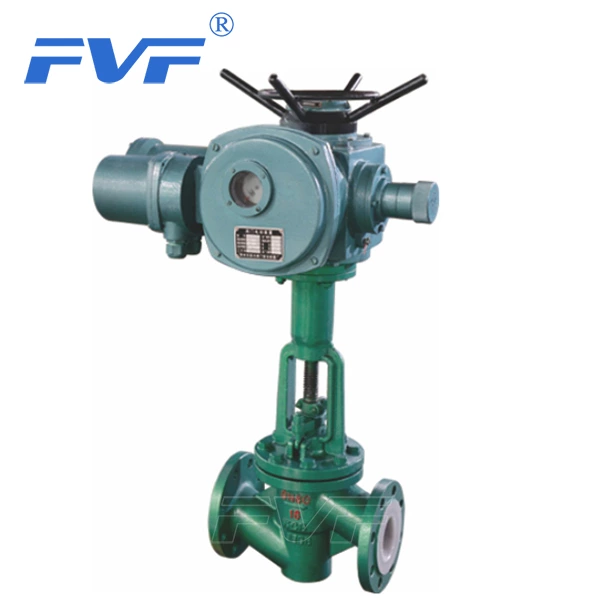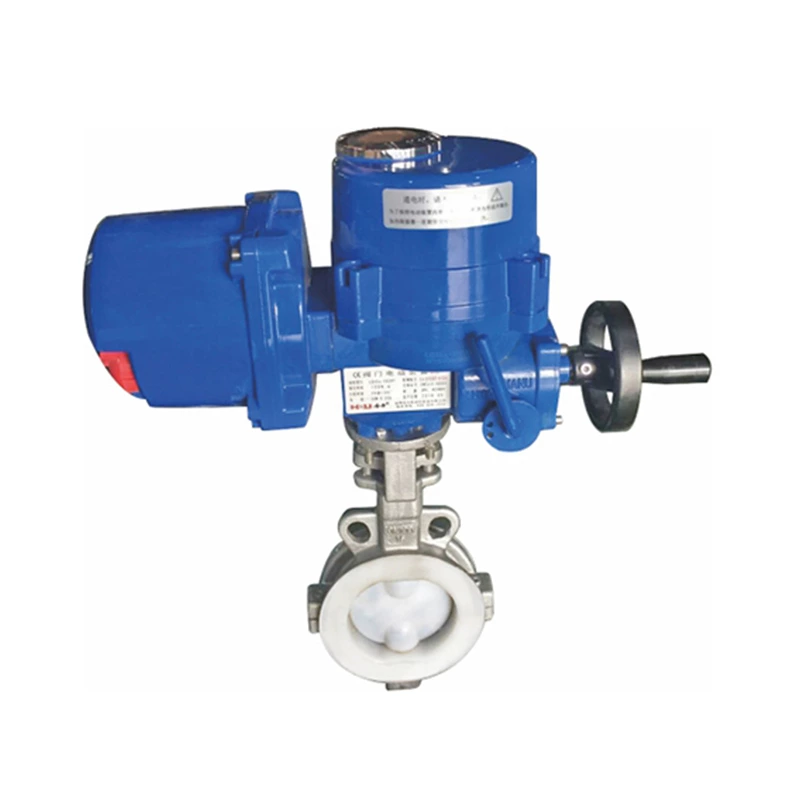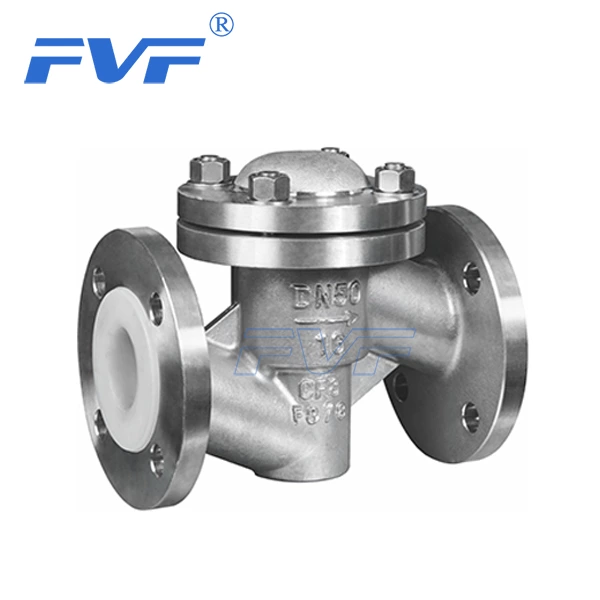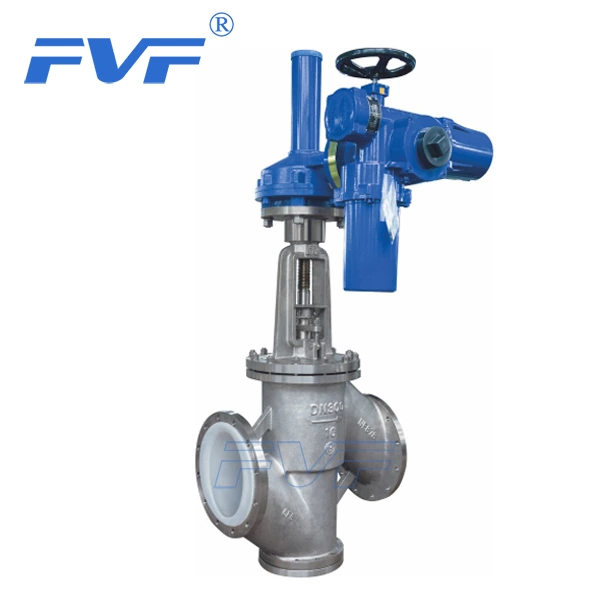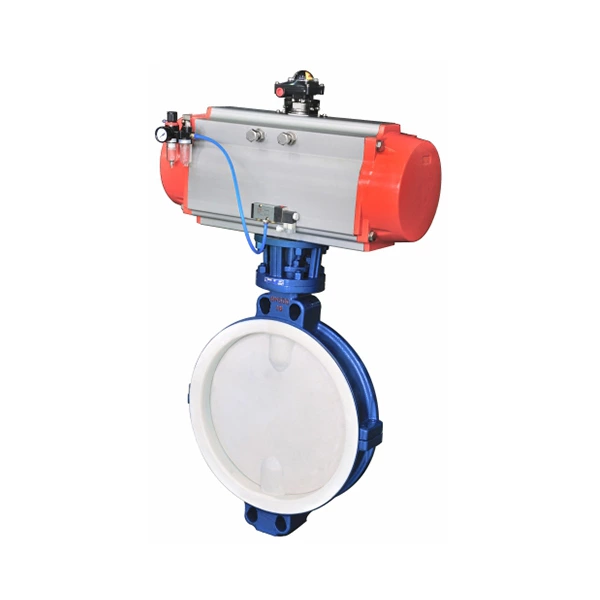Classification, Purpose And Use Of Fluorine-lined Valves, Characteristics Of Fluorine-lined Valves
Fluorine-lined valve products include Lined Globe Valve, rubber-lined ball valves, etc., and their manufacturing technology includes the formula of adhesives and their production process. The adhesive can make the lining rubber have a strong affinity with the pipe wall, and has good anti-corrosion and anti-scaling properties, long service life and other advantages. In order to make the valve have both the strength of metal and the characteristics of corrosion resistance. Classification of fluorine-lined valves: Fluorine-lined valves are divided into: pipe clamp valves, lined diaphragm valves, lined pneumatic butterfly valves, lined ball valves, lined check valves, lined fluorine stop valves, lined plug valves, lined wedge gate valves, diaphragm valves, butterfly valves, ball valves, swing type, ball core check valves, pneumatic lined rubber, lined fluorine plastic diaphragm valves (normally closed), DC lined rubber diaphragm valves, packing type adjustable lined fluorine plastic butterfly valves, lined fluorine plastic stop valves, etc. Purpose and use of fluorine-lined valves: With the rapid development of modern industry, fluorine-lined valves and various pipeline accessories have been rapidly applied and promoted in various fields such as petroleum, printing and dyeing, and chemical industry, showing strong vitality. As the preferred project in the project, it has attracted great attention and favor from various engineering design units and construction units. It is a sunrise product with great market potential. Fluorine-lined valves have the dual functions of switching and flow regulation. They can conveniently open and close the gas line without affecting the flow, ensuring the repeatability of the flow. It opens slowly, reducing the impact of instantaneous pipeline pressure on the instrument. It is equivalent to adding a damper, thereby greatly improving the service life of the needle valve. Fluorine-lined valves are specially used to control corrosive or highly corrosive media. The inner surface of the valve body is covered with various fluoroplastics that can be selected. It is suitable for different working temperatures and fluid pipelines, and has the characteristics of high strength and good corrosion resistance. Fluorine-lined valve introduction: Fluorine-lined valves are also called fluoroplastic-lined corrosion-resistant valves. They are made by molding (or inlaying) polytetrafluoroethylene resin (or processed profiles) on the inner wall of steel or iron valve pressure-bearing parts (the same method is applicable to the lining of various pressure vessels and pipeline accessories) or the outer surface of valve internals. They are made into various valves and pressure vessels by using their unique performance in resisting strong corrosive media. Fluorine-lined valves use lining technology for all places in the valve body that the medium can reach. The lining materials are generally made of fluoroplastics such as FEP (F46) and PCTFE (F3). They can be used in pipelines with various concentrations of sulfuric acid, hydrochloric acid, hydrofluoric acid, aqua regia, various organic acids, strong acids, strong oxidants and other corrosive media. However, fluorine-lined valves are relatively limited by temperature (only applicable to media between -50℃ and 150℃). Valves that can be made of fluoroplastic linings include: fluorine-lined butterfly valves, fluorine-lined ball valves, fluorine-lined stop valves, fluorine-lined diaphragm valves, fluorine-lined gate valves, fluorine-lined plug valves, etc.
Introduction to polytetrafluoroethylene: Among the corrosion-resistant materials, polytetrafluoroethylene has incomparable excellent properties. In addition to molten alkali metals, elemental fluorine and aromatic hydrocarbons, it reacts randomly in various concentrations of hydrochloric acid, sulfuric acid, nitric acid, aqua regia, organic acids, strong oxidants, concentrated and diluted acid alternation, alkali alternation and various organic solvents. Lining the inner wall of the valve with polytetrafluoroethylene can overcome the shortcomings of low strength of polytetrafluoroethylene materials and solve the shortcomings of poor corrosion resistance and high cost of the main body of the valve. In addition, in addition to its excellent chemical stability, polytetrafluoroethylene has good anti-fouling and anti-sticking properties, extremely small and similar dynamic and static friction coefficient values, and good anti-friction lubrication properties. It is used as a sealing pair for valve opening and closing parts to reduce the friction between the sealing surfaces, reduce the valve operating torque, and increase the service life of the product. Its scope of use can also be extended to the food and pharmaceutical industries. Introduction and use of fluorine-lined valves Features of fluorine-lined valves: Fluorine-lined valve products include rubber-lined stop valves, rubber-lined ball valves, etc., and its manufacturing technology includes the formula of adhesives and their production process. Adhesives can make the lining rubber have a strong affinity with the pipe wall, and have good anti-corrosion and anti-scaling properties, long service life and other advantages. In order to make the valve have both the strength of metal and the characteristics of corrosion resistance, solenoid valve. Classification of fluorine-lined valves: fluorine-lined valves are divided into: pipe clamp valves, lined diaphragm valves, lined pneumatic butterfly valves, lined ball valves, lined check valves, lined stop valves, lined plug valves, lined wedge gate valves, diaphragm valves, butterfly valves, ball valves, swing type, ball core check valves, pneumatic lined rubber, lined fluorine plastic diaphragm valves (normally closed), DC lined rubber diaphragm valves, packing type adjustable lined fluorine plastic butterfly valves, lined fluorine plastic stop valves, etc. Use and use of fluorine-lined valves: With the rapid development of modern industry, fluorine-lined valves and various pipeline accessories have been rapidly applied and promoted in various fields such as petroleum, printing and dyeing, and chemical industry, showing strong vitality. As the preferred project in the project, it has attracted great attention and favor from various engineering design units and construction units. It is a sunrise product with great market potential. Fluorine-lined valves have the dual functions of switching and flow regulation. They can conveniently open and close the gas line without affecting the flow rate, ensuring the repeatability of the flow rate.
It opens slowly, reducing the impact of the instantaneous pipeline pressure on the instrument. It is equivalent to adding a damper, which greatly increases the service life of the needle valve. Fluorine-lined valves are specially used to control corrosive or highly corrosive media. The inner surface of the valve body is covered with various fluoroplastics that can be selected. It is suitable for different working temperatures and fluid pipelines, and has the characteristics of high strength and good corrosion resistance. Introduction to fluorine-lined valves: Fluorine-lined valves, also known as fluoroplastic-lined corrosion-resistant valves, are polytetrafluoroethylene resin (or processed profiles) that is molded (or inlaid) on the inner wall of the steel or iron valve pressure-bearing parts (the same method is applicable to the lining of various pressure vessels and pipeline accessories) or the outer surface of the valve internals, and its unique performance in resisting highly corrosive media is used to make various valves and pressure vessels. Fluorine-lined valves are lined with lining technology for all places within the valve body that can be reached by the medium. The lining materials are generally fluoroplastics such as FEP (F46) and PCTFE (F3). They can be used in pipelines with various concentrations of sulfuric acid, hydrochloric acid, hydrofluoric acid, aqua regia, various organic acids, strong acids, strong oxidants and other corrosive media. However, fluorine-lined valves are greatly limited by temperature (only suitable for media between -50℃ and 150℃). Valves that can be made of fluoroplastic lining include: fluorine-lined butterfly valves, fluorine-lined ball valves, fluorine-lined stop valves, fluorine-lined diaphragm valves, fluorine-lined gate valves, fluorine-lined plug valves, etc. .Introduction to polytetrafluoroethylene: Among the corrosion-resistant materials, polytetrafluoroethylene has incomparable excellent properties. In addition to molten alkali metals, elemental fluorine and aromatic hydrocarbons, it reacts randomly in various concentrations of hydrochloric acid, sulfuric acid, nitric acid, aqua regia, organic acids, strong oxidants, alternating concentrated and diluted acids, alternating alkalis and various organic solvents. Lining the inner wall of the valve with polytetrafluoroethylene can overcome the shortcomings of low strength of polytetrafluoroethylene materials and solve the shortcomings of poor corrosion resistance and high cost of the main body of the valve. In addition, in addition to its excellent chemical stability, polytetrafluoroethylene has good anti-fouling and anti-sticking properties, extremely small and similar dynamic and static friction coefficients, and good anti-friction lubrication properties. It is used as a sealing pair for valve opening and closing parts to reduce the friction between the sealing surfaces, reduce the valve operating torque, and increase the service life of the product. Its scope of use can also be extended to the food and pharmaceutical industries.
